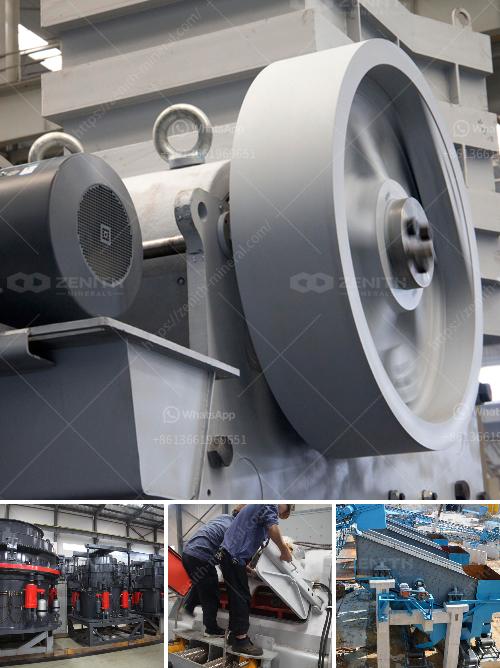Processing feldspar is essential for its use in various industrial applications, particularly in glassmaking, ceramics, and as fillers in paints, plastics, and rubber. Here’s a general overview of how feldspar is processed:
Mining: Feldspar is typically mined through open-pit mining or, less commonly, through underground mining. The mineral is extracted from large deposits and broken down using drilling and blasting techniques.
Crushing and Grinding: Once extracted, the raw feldspar is typically subjected to primary crushing to reduce the size of the mineral. Secondary crushing and grinding might follow to produce a finer particle size. This often involves using equipment such as jaw crushers, cone crushers, or impact crushers.
Screening and Classification: The crushed feldspar is then passed through screens and classifiers to separate the material into different size fractions according to the specific requirements of the end use.
Washing and Desliming: In some cases, the feldspar ore is washed to remove impurities such as clay, dust, and other extraneous materials. Desliming is also performed to remove fine particles that could interfere with subsequent processing steps.
Magnetic Separation: Feldspar often contains magnetic impurities such as iron oxides. Magnetic separation techniques are employed to remove these impurities and enhance the purity of the feldspar.
Flotation: To further purify the feldspar, flotation may be used. In this step, the feldspar is mixed with water and reagents that promote the separation of feldspar from other minerals. Air bubbles are introduced, and the feldspar attaches to the bubbles and rises to the surface, where it can be skimmed off.
Dewatering and Drying: After flotation, the feldspar slurry is dewatered and dried. This might involve using vacuum filters, centrifuges, or rotary dryers.
Milling and Final Grinding: The dried feldspar may undergo additional milling to achieve the desired particle size. Ball mills, rod mills, or hammer mills can be used for this purpose.
Quality Control and Packaging: The processed feldspar is subject to rigorous quality control checks to ensure it meets industry standards and specifications. Once quality is assured, the feldspar is packaged for shipment to manufacturers or end-users.
By following these steps, feldspar is transformed from a raw mineral into a valuable industrial material suitable for various applications.
